Virtual and simulation training isn’t necessarily new to the industry but its acceptance has been met with intrigue, and trepidation. But to say that this is the future of training? Not so fast. The consensus thoughts regarding this type of training is that will never replace in-person or on-the-job training, but it will become a Read more
training
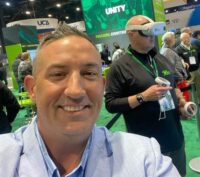
Virtual and simulation training isn’t necessarily new to the industry but its acceptance has been met with intrigue, and trepidation. But to say that this is the future of training? Not so fast. The consensus thoughts regarding this type of training is that will never replace in-person or on-the-job training, but it will become a cog in the overall “wheel” for training assets.
According to Taco Comfort Solutions’ Product & Application Instructor-East, Dave Holdorf, Taco doesn’t want to change its training necessarily, rather seek to enhance the training experience.
“We ask many attendees how we can improve our classes and seminars. One of the most frequent replies is: ‘Add a hands-on section to the class; the theory is great and useful, but I want to install.’
“In a classroom setting, this can sometimes be difficult for the space needed, the time it takes, and to accommodate the different skillsets of attendees. We believe we’re now on a track with virtual reality (VR) training to give that experience to attendees—whether they’re seasoned pros, or new to the trade. VR can help to guide participants in what to look for, and more importantly what not to do on a project,” says Holdorf.
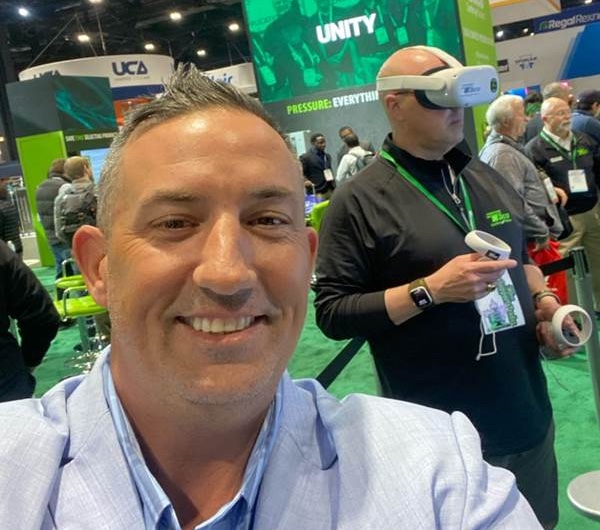
F.W. Webb’s Michael DelConte checks out the VR display at the Taco booth during the AHR Expo.
Ken Midgett, former teacher and apprenticeship Instructor, Lehigh Career & Technical Institute, now Plumbing, Marketing Director with Interplay—whose mission statement is “Better Careers Better Lives”—believes that they can play a part in a person’s career trajectory with that person using Interplay’s content. “When a person engages in learning and increases both their fundamental knowledge and the steps to do a task, we are helping that person upskill and creating more career opportunities for them. The value of a product that interplay offers is the demand function. You do not have to wait until a class is offered you can just connect and learn,” says Midgett.
Adaptation to simulation and on-demand training is paramount to success for the learner and the business. Midgett says that traditional classroom learning for skilled trades is becoming more and more challenging for several reasons:
- Finding good instructors: Many think that because they know a skill, they can teach it effectively. As a former educator, this is not always the case. This leads to poor instruction and marginal learners who are not engaged.
- The cost: The cost of running and maintaining a hands-on training center is much higher than instructor salaries and consumables.
- Change or die: Young learners are not inept at learning from lectures. Most skilled trade learners need to be engaged with learning and it must represent meaningful learning.
- The disruption of classroom learning to the workday: A rationale for going to class in the evening for 2-3 hours is losing traction to young learners. Business owners become frustrated with learning times and days as they view this as unproductive time. Young learners need to be met where they are with training that fits their lifestyle.
Interplay Learning training, combined with the new employee with the right attitude who is coachable and willing to learn, can be an explosive combination with a win-win result. “Taking an apprentice and having them spend time training and learning with on-demand training and then pushing that person into the field with a skilled person to watch and do in the real world is the best way to train this person or persons at scale,” says Midgett, who says there are numerous other advantages to this model:
- On-job efficiency increases as the apprentice now possesses the foundational knowledge and skills to perform a given task.
• Relationships are better between the journeymen and the apprentice, as the journeyman perceives the apprentice as engaged and productive.
• Business owners experience low turnover, better culture, and increased revenue as these new hires have direction and are leaning at scale.
• Technicians feel confident in their work due to training and upskilling.
• Callbacks are reduced and remediation training for the technician to increase their confidence
• Service managers can focus on coaching and maintaining technician stats instead of being the only technical lifeline for numerous techs.
• When sending these apprentices to “factory training,” they can engage and understand this much better due to the foundational knowledge.
Nonetheless, Midgett says there are a few things to note and understand about simulation and on-demand training:
• On-the-job or hands-on training with higher skilled supervision cannot be replaced.
- Simulations are great at teaching steps and muscle memory of a task.
- Simulation or any on-demand training cannot teach “feel.” As an example, simulation training cannot teach the skill of what “tight” feels like with a pair of wrenches on threaded steel piping or how tight to make a tank-to-bowl connection on a closet, or how tight a screw should be on the control board. This is what the onsite skilled person or journeyman must understand and teach effectively on site.
“While VR, AR and simulation-based technology are great resources, I do not think that any one particular learning system or style is the future,” says Rich Camacho, CEO & Co-Founder, BlueRecruit. Having said that, Camacho utilizes Interplay’s services (all of Interplay’s certifications and courses live on BlueRecruit, and when a person completes an Interplay course, they can then add that qualification to their BlueRecruit profile to strengthen their profile for Employer) and he thinks Interplay is a fantastic tool to augment in-class learning and a great launch point for someone either just entering the trades or seeking to upskill a particular technique.
“However, at the end of the day true craft mastery will occur in the field with a wrench. As technology continues to improve and costs continue to decline, Interplay will play a larger and larger part of building the next generation of skilled trades professionals and we’re excited to work alongside them in building “Better Careers and Better Lives,” says Camacho.

Training in 2024 is just as important as ever. How do you integrate training, education and continued learning with today’s busy contractor? Power Points, sales pitches and doughnuts. Tried and true methods of training gone by, that’s for sure. But what does today’s training look like, especially in the purview of the younger generation of Read more
Training in 2024 is just as important as ever. How do you integrate training, education and continued learning with today’s busy contractor?
Power Points, sales pitches and doughnuts. Tried and true methods of training gone by, that’s for sure. But what does today’s training look like, especially in the purview of the younger generation of contractors that digests information in 90 seconds or less?
“What was that? Sorry, I was looking at my phone,” jokes Max Rohr, Director, Education and Technical Marketing, Caleffi. “Five years ago, a three-minute-long video was a good option, now it will seem long if it is over that 90-second threshold. Ideally, you get to the point in the first five seconds and work the explanation back from there. Like showing the cake and then going back to bowls of ingredients.”
According to, Dave Holdorf, Residential Trainer & Rep Training Manager—Eastern Region, Taco Comfort Solutions, it’s a challenge. “We’ve found that it helps to bring different instructors in for specific segments of the training. Each instructor brings their own perspective; even hearing a different voice in the room makes for a more compelling presentation. Every facet of our training is now geared to maintain the attention of participants. We also make sure to schedule breaks so that the attendees can attend to business, or need at home. By creating the curriculum with attendees in mind, their focus remains with the topic in front of them.”
Nevertheless, the training department at Taco has always looked at training not from a product view but from an application perspective, giving attendees the information they need to do their job better, and to give their customers the comfort they deserve. “We use real world experiences to solve real world problems with personal experiences and a bit of humor—as you know, John, it ain’t worth doing if you’re not having fun as well,” says Holdorf.

Caleffi’s Bob “Hot Rod” Rohr brings his props and his wealth of experience and knowledge to trainings.
But what about those PowerPoints and doughnuts? “Every learning style is different, so you have to be adaptable. If you see the audience tuning out a PowerPoint, stop and grab a product to bring to an attendee and talk about a case study that is related instead,” says Rohr.
In addition, everything falls apart for a trainer if the audience gets the impression they are overpromising, adds Rohr. For example, “Honesty is something Hot Rod is specifically good at in contractor training sessions. As a former installer, he always has tips for getting the job done and workarounds that are really tangible,” says Rohr.
The New Normal?
The Covid pandemic saw what we thought was going to be a new normal with virtual training, but what we are now seeing is the importance, and return, of in-person training.
This past year Taco saw a huge jump of in-person training, on the road as well as at Taco HQ in Rhode Island. So much so that the company had to dramatically increase the number of sessions back in Rhode Island to accommodate. “However, that does not mean to diminish the virtual training, Taco Tuesday and Taco After Dark webinars are still posting a large number of attendees that are hungry for information in bite size chunks, not as large as when we all locked down at home, but still popular,” says Holdorf.
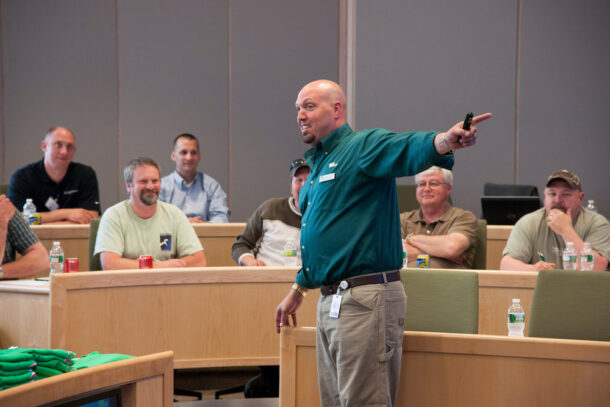
Taco’s Holdorf conducts a training at the Cranston, R.I. HQ.
Nonetheless, “when we’re online, we know it’s so easy to stray off to the next shiny thing online, so to keep attendees engaged, we encourage two-way communications. If participants have questions, we want them to ask immediately,” continues Holdorf.
In fact, Holdorf says that people who attend Taco’s webinars typically take it to the next level and seek live training. A combination of both virtual and live training can help attendees dial in on what they want to learn—or perhaps didn’t initially develop a full understanding of what it is they most needed to know. “These options allow them to fine-tune their training experience to make them as good as they want to be. And, ideally, we help them raise the bar. We routinely heard from trade pros who came to us for a better understanding of a single application or concept, and through that experience come away with an energized desire for much more,” says Holdorf.
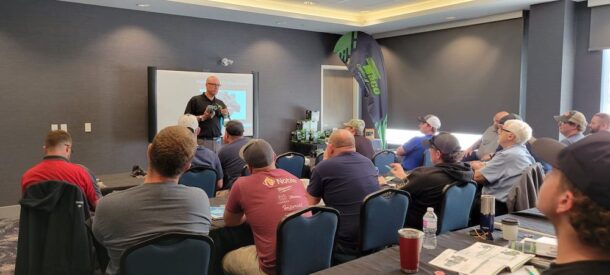
In 2023, Caleffi performed almost a 50/50 mix of in-person and virtual. Contractors like hands-on training, says Rohr, so it is good to be back on job sites for that type of interaction. And, engineers didn’t all go back to the office after COVID. “Many of the engineering sessions we do are virtual because that firm may be scattered all over the region. You might catch 20 people in a virtual training, where only 10 of them are in the office that day,” says Rohr.
Know-It-Alls
What about those who are stubborn enough to think that they don’t need further education and training? “I love this question and see and hear it often in the industry,” says Ken Midgett, L.M.P, Plumbing, Marketing Director, Interplay Learning, and former Teacher and Apprenticeship Instructor, Lehigh Career & Technical Institute.
Those in skilled trades should embrace the concept of being “lifelong learners,” consistently expanding their knowledge in their current specialty and exploring related disciplines. Whether licensed or not, individuals in skilled trades should assess their goals, career paths and professional growth within their field. It’s common for some to reach a point where they feel adequately skilled and think further education is unnecessary. According to Midgett, this assumption is misleading for several reasons:
• For example, a residential plumber could benefit from learning about commercial plumbing, Med Gas, Backflow, Water Well work, Water Conditioning, HVAC, Electrical, etc. Diversifying skills not only enhances one’s expertise but also increases their marketability across various skill sets, intern boosting income and long-term employability.
• Despite advancements in safety measures within the construction industry, the misconception that skilled trades workers are immune to injuries persists. While the overall safety landscape has improved, life-changing injuries can still occur. In such unfortunate instances, if an individual can only rely on skills specific to their trade and lacks versatility, their career may face irreparable damage. Therefore, investing in ongoing training, education, and professional development becomes crucial for ensuring resilience in the workforce and mitigating the impact of unforeseen challenges. Repurposing skillsets may be challenging when there has been no prior skill or professional development planning before the injury event.
• The industry, codes, tools, and methods to do a task are constantly changing. Skilled trades workers need to educate themselves and stay on top of new developments. This is critical to the success of a technician and company.
In the end, it’s what ends up in the ol’ noggin as useful information that translates to the jobsite. “Students only retain a tiny amount of the information that you present to them, but they will remember their feelings about the trainer for a very long time,” says Rohr. “It is hard to know if a bigger win is when customers retain a piece of information you presented or if they remember that you seem like you know what you are talking about. “If they trust that you did a good job, that memory will stay with them for a career, potentially.”

In today’s ever-changing business landscape, strengthening the contractor/wholesaler channel is critical to survival. A recent general session at PHCC CONNECT drilled deep into the conversation. “How does my supplier make me look like a rock star?” asked Dan Callies, President, Oak Creek Plumbing, Inc., Oak Creek, Wis., during the “Collaborative Connections: Strengthening Supplier-Contractor Relationships for Read more
In today’s ever-changing business landscape, strengthening the contractor/wholesaler channel is critical to survival. A recent general session at PHCC CONNECT drilled deep into the conversation.
“How does my supplier make me look like a rock star?” asked Dan Callies, President, Oak Creek Plumbing, Inc., Oak Creek, Wis., during the “Collaborative Connections: Strengthening Supplier-Contractor Relationships for Success” general session at the PHCC Connect show last month in Cleveland. Joining Dan on stage was an all-star cast featuring emcee Robert Grim, Senior Vice President, Global Sales, InSinkErator, Mount Pleasant, Wis.; Scott Robertson, President, Robertson Heating Supply Co., Alliance, Ohio; Kathryn Poehling-Seymour, President and CEO, First Supply LLC, Madison, Wis.; and Jason Pritchard, Co-Founder, PriCor Technologies, Seattle.
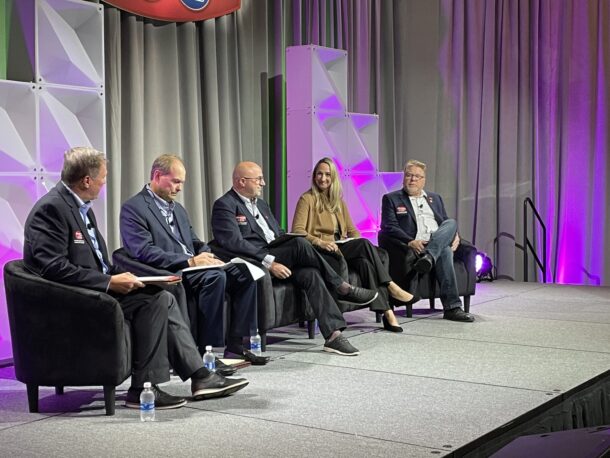
From l to r: Robert Grim, Senior Vice President, Global Sales, InSinkErator, Mount Pleasant, Wis.; Scott Robertson, President, Robertson Heating Supply Co., Alliance, Ohio; Kathryn Poehling-Seymour, President and CEO, First Supply LLC, Madison, Wis.; and Jason Pritchard, Co-Founder, PriCor Technologies, Seattle.
That’s the million-dollar question, right? How does the supplier/contractor relationship make each other better at his/her jobs, and contribute to the overall company mission? Throw in the manufacturer here too, for that matter. Some of the fundamental tenets for strengthening that relationship—that were discussed at the general session—included collaboration, value distribution services, availability, technology and training, and expectations.
Can’t We Just Get Along?
InSinkErator’s Grim asked about the value of working together, and Poehling-Seymour stressed that collaboration is critical in this relationship. “We must understand the pain points and what is working and what isn’t.”
And with that comes better communication. “We are in a relationship industry where communication is imperative,” said Pritchard. If that means paying a bit more for that stronger relationship, then so be it, intimated Pritchard.
Callies echoed this but stressed right communication over more communication. The common thought is “wide equals pricing and deep equals relationships,” said Callies.
So, let’s go deep as an industry. When asked what the landscape is going to look like in five-to-10 years for the contractor/wholesaler/manufacturer, people, processes and services matter. Through trust and preferences, “Relationships are going to matter more,” said Pritchard.
What about expectations? “We want to be around for another 10-20 years,” said Robertson. “We want to see contractor loyalty in the channel,” continued Robertson. “And that means a loyalty to the wholesaler in your particular market.”
Stock Market
Let’s not avoid the 800-lb. gorilla in the room. With contractor loyalty, comes availability and pricing. For Robertson, inventory presence is critical so much so that Robertson Supply holds inventory for approximately 100-125 days. “Listen, we don’t make or install anything so we better be damn good at inventory management,” said Robertson.
Value distribution services ties right in here, “It’s about right product, right time, right price,” said Poehling-Seymour. “Be that added value family.”
Tech Relevant
It’s imperative for these brick-and-mortar supply houses to stay on top of the latest trends and technology. “The key to survival is to stay progressive and current,” said Robertson. Upon further self-reflection, “how do we make it easier to find product?” asked Robertson. “This includes being totally integrated with our contractor partners and researching and developing a technology that contractors will use.”
 Poehling-Seymour added that First Supply LLC institutes “customer councils” to continuously get a pulse of the customer. “We try to make sense of the noise,” said Poehling- Seymour. “Where is critical mass in that noise so we can make the right decisions?”
Poehling-Seymour added that First Supply LLC institutes “customer councils” to continuously get a pulse of the customer. “We try to make sense of the noise,” said Poehling- Seymour. “Where is critical mass in that noise so we can make the right decisions?”
Unless you’ve been riding under a technology rock, Artificial Intelligence (AI) has dominated the talk in most every corner of the tech universe, and it has crept into the PHVAC industry as well. While artificial intelligence, in and of itself, can sound scary and intimidating, according to Poehling-Seymour, “AI has real application in the industry purchasing and predictability.”
For suppliers, it’s imperative to keep all “moving-forward” options available, as Robertson suggests. This includes, and nothing new and earth shattering in our industry, maximizing e-commerce when necessary. “E-commerce presents the right tools at your fingertips,” said Poehling-Seymour. Robertson adds that for his company, online ordering represents 20% volume. Other tech advancements, which included the use of QR codes to streamline processes and online training, were mentioned.
Training Room
InSinkErator’s Grim offered that in today’s business landscape, there is more need for training.
In fact, says Grim, PHCC members ask for training and education now more than ever. “With evolution and advancement comes training and education,” said Callies. Doubling down on this, Poehling-Seymour stated that First Supply opened a training center and offers a variety of training through streaming content.
Callies suggests that people still are the cogs in the wheel that makes this industry run, “Digital when you can, verbal when you must.” Pritchard and Poehler-Seymour agree, saying that people and the process are key through direct communication, and that includes all members of the channel—contractors, manufacturers, all the way down to the inside and outside sales, drivers, dispatchers, etc. within each organization.
So, let’s go back to the original question: How do we all make each other look like rock stars? Consuming all of the above, and, quite simply, “look for successes and build on them,” said Callies.
This article originally ran in PHCC’s Solutions magazine. You can learn more about the Plumbing-Heating-Cooling-Contractors (PHCC) Association at www.phccweb.org.

The business development, training and implementation organization for the service business industry will offer its members access to the home service distributor’s extensive supply chain of products and solutions CEO Warrior, a nationally recognized business development, training and implementation organization for the service business industry, announced today that it has entered into a collaboration with Ferguson Read more
The business development, training and implementation organization for the service business industry will offer its members access to the home service distributor’s extensive supply chain of products and solutions
CEO Warrior, a nationally recognized business development, training and implementation organization for the service business industry, announced today that it has entered into a collaboration with Ferguson , a project success company providing expertise, solutions and products from infrastructure, plumbing and appliances to HVAC, fire, fabrication and more, to provide its members with preferred access to the home service fulfillment giant.

“This collaboration with Ferguson shows CEO Warrior’s commitment to add value to the services we provide our members,” CEO Warrior CEO Scott Bohannon said. “It is our goal to offer our clients everything they need to be successful in their markets. Not only does CEO Warrior offer a full complement of training and mentoring solutions that help our members lead, grow and scale their services, we can now also offer them access to some of the finest products available in Ferguson’s supply chain.”
Founded in 1953, Ferguson is a leading value-added distributor of residential and commercial plumbing supplies and pipe, valves and fittings in the U.S. The company has 10 distribution centers offering clients rapid inventory access with the convenience of Pro Pick-Up services in as little as one hour, same-day or next-day delivery options.
“I am incredibly excited about the relationship between CEO Warrior LLC and Ferguson,” said CEO Warrior Director of Business Development Caroline Moriarty. “This collaboration enables us to deliver greater value to our clients and reinforces our commitment to continued growth and high standards of quality products and services.”
CEO Warrior is the highest level business training and implementation organization in the trades industry. It is led by experts who have achieved success building and leading their own trades businesses and its members include the leaders of home service companies that provide plumbing, HVAC and other residential and commercial service companies.
For more information about CEO Warrior and how to become a member, please visit https://ceowarrior.com/.
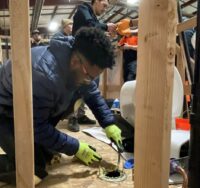
Tacoma plumbing service provider advocates transformational thinking about trades while building next-generation workforce with immersive Harts Academy initiative Harts Services, a top-rated Tacoma-based plumbing company founded in 2013, urges jobseekers to consider the many rewarding, high-paying career opportunities available in the essential skilled trades. “Whether you’re just entering the workforce or you’re frustrated in your Read more
Tacoma plumbing service provider advocates transformational thinking about trades while building next-generation workforce with immersive Harts Academy initiative
Harts Services, a top-rated Tacoma-based plumbing company founded in 2013, urges jobseekers to consider the many rewarding, high-paying career opportunities available in the essential skilled trades.
“Whether you’re just entering the workforce or you’re frustrated in your current job and want to make a mid-career change, we encourage everyone to think about the trades as a meaningful alternative to the traditional career path,” said Rich Hart, co-owner of Harts Services. “Many of us have been taught that attending a four-year college is the only way to have a successful and satisfying career. But we’re starting to see that college doesn’t necessarily pay off for everyone. That’s leading a lot of young people to look for other options.”
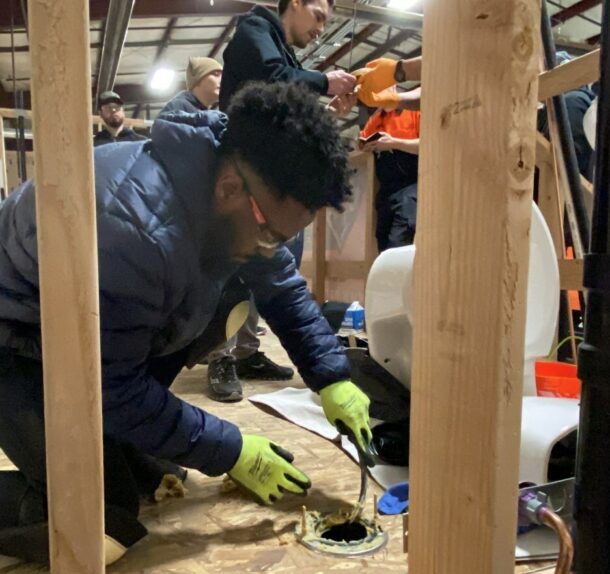
Harts Services, a top-rated Tacoma-based plumbing company, supports jobseekers considering a rewarding, high-paying career in the essential skilled trades with its innovative Harts Academy in-house training program.
As the cost of a college education continues to rise, the long-term financial value of a four-year degree is steadily declining. At the same time, an ongoing shortage of skilled labor is driving up demand for trained workers in home service industries such as plumbing, electrical and HVAC. Experienced technicians in those fields are highly employable and can demand premium salaries as well as signing bonuses, paid training and opportunities for rapid advancement.
“Instead of treating trades as a fallback, we want people entering the trades to be energetic and enthusiastic,” Hart said. “Being a plumber or electrician requires training, focus, problem-solving and people skills, just like any other profession. It’s a dynamic and engaging field with a lot of upside, especially in today’s labor market.”
In 2022, Harts Services launched Harts Academy, an innovative in-house apprenticeship program that prepares motivated trainees for immediate employment.
The Harts Academy program includes four weeks of comprehensive classroom education and immersive hands-on experience in the Harts Academy plumbing platform. Classroom sessions are followed by two to three years of supervised field training with licensed plumbers, with pay raises to match experience, testing and skill level. Harts Academy also provides preparation assistance for the plumber licensing exam.
“We created Harts Academy to help meet the needs of our industry overall and transform how younger generations think about the trades,” Hart said. “We’re investing in the creation of a truly trained and expert team not only here at Harts but throughout the Pacific Northwest. It’s part of a major disruption that we expect to unlock new opportunities for young people, drive economic growth and ensure that homeowners have access to the services they need.”
Harts Academy apprentices support plumbing leads in the warehouse and on jobsites while actively learning core skills. A valid driver’s license and clean driving record are required. Apprentices must be able to lift up to 50 pounds and are expected to work in crawlspaces, operate machinery, climb ladders and stairs, and other physical work in the warehouse and on jobsites.
For more information about Harts Services, please call (253) 470-8766 or visit www.hartsservices.com.
For more information about Harts Academy or to apply, visit https://hartsservices.com/academy-apprentice-program/.
